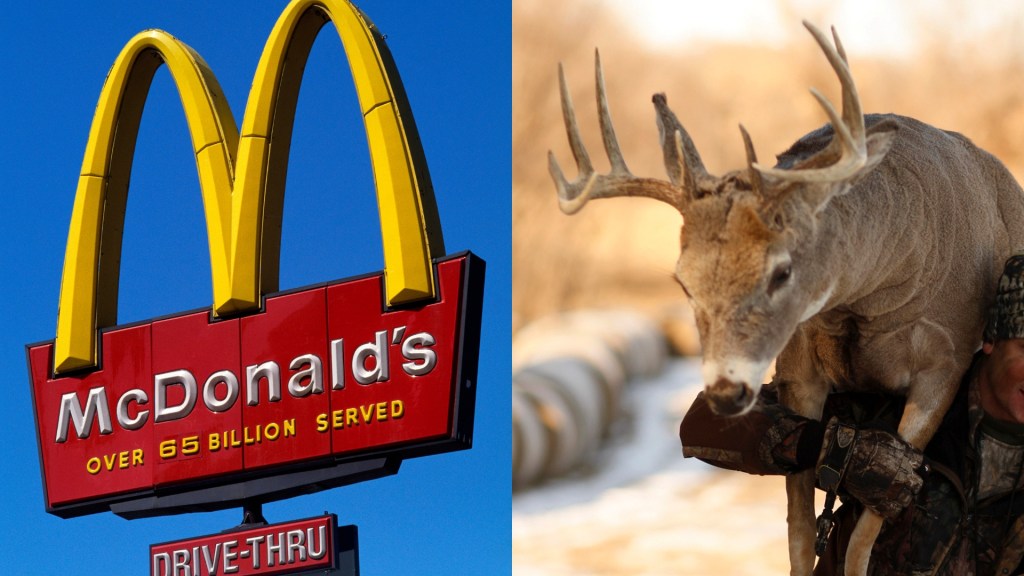Taxidermy is a hobby that will either make people’s eyes light up with fascination or have them queasily trying to call conversations quits, reminding themselves not to talk to you at future house parties. It’s controversial – and probably not something that enhances a Hinge profile.
Although I haven’t made it as far as skinning anything myself, I fall decidedly into the bright-eyed category. Around four years ago I stumbled across a perfectly picturesque taxidermy fawn, in a permanent sleeping position, on Facebook Marketplace. I snagged it for $55 and have been in love ever since. Now I scout second hand stores for furry friends and have a mouse (dead) in my freezer waiting to be ‘dermed, hopefully by my own hand. So it’s fair to say I’m more than averagely interested.
Videos by VICE
While taxidermy is considered by many to be an unsightly craft, it’s actually fairly easy to find in Aotearoa. Walk into Te Papa and you’ll be faced with endless cabinets of mounted native creatures and the eternally iconic colossal squid.
Similarly, many conservation and wildlife centres display taxidermied animals to educate their visitors. If you head to TradeMe, Aotearoa’s largest auction site, you’ll see everything from $1 splayed butterflies to $7500 Texas longhorns.
And there’s a quietly thriving hunting and taxidermy tourism business operating on New Zealand shores, too. A quick google search shows that “NZ hunting packages” are advertised on overseas websites, offering trips to private ranches and farmlands to live out your wildest hunting dreams. Our rolling hills offer a bounty of beautiful wildlife that are legal to hunt and kill.
At the top of the taxidermy pyramid is the NZ Taxidermy Association, established in 2003. Its members have access to seminars, advisers and competitions, all in pursuit of ensuring the industry “is held in high regard.”
If you’re sitting here still wondering what taxidermy actually is, the term comes from the Greek words taxis (arrangement) and derma (skin). The form of a real deceased animal is shaped with various non-animal parts (like foam, wire, sawdust, wood, wool and straw) and the animal’s real pelt or skin is then pulled over the form. While the majority of the bones aren’t used by most taxidermists, other features like skulls, beaks, claws, teeth and feet are used to increase the realism. With clever smoke and mirrors, taxidermists are able to create incredibly beautiful and lifelike pieces.
Like any lively community, the reasons that people in Aotearoa engage with taxidermy are incredibly varied: art, conservation, a love of wildlife, a hunting legacy, the list goes on.
Antionette Ratcliffe is a full time artist based in Wellington who practises taxidermy. I tracked her down because I felt true delight in her work. From bunny rabbits nestled up and adorned with butterflies to a blackbird lying exactly as you would find it if it had plummeted from the sky, it had everything that makes taxidermy special to me: a sense of the macabre, whimsy and honesty about the state of the animals.
Her reasons for starting were simple. “I saw other people doing really cool work and I was like, I want to do that,” she said.
Ratcliffe created an art piece that included a non-taxidermy baby possum carcass, which she submitted to Semi Permanent for an exhibition and was accepted. From there she joined the NZTA, did a few workshops and had private training with esteemed local taxidermist Peter Wells.
Surprisingly, a full-time job in taxidermy is a viable endeavour for the lucky few. According to Ratcliffe, a commission from an educational facility like Zoolandia or Te Papa can pay several thousand dollars for a few pieces.
Chase Voss, a Wellington taxidermist and treasurer for the NZTA who specialises in birds, first became interested in the practice in his formative years. He also hunts and grew up around both activities – his father was an avid hunter, taxidermist, farmer and wildlife enthusiast.
Voss told VICE that, as a young boy, he would often watch his dad as he worked on taxidermy.
“I suppose it’s not your average childhood,” he said.
“It gave me the chance to admire them up close and see the different feathers… Just nature in detail, which you don’t appreciate when you see something fly past your window at 50 metres away.”

Based in Queenstown, fourth generation taxidermist David Jacobs tackles everything from big game to salmon in his trophy business. Having also grown up hunting, Jacobs sees it as an essential part of remaining connected with nature.
“Once upon a time, the vast majority of New Zealanders lived in a rural environment,” he said. “Now over one million people live in one city and people are very disconnected from the natural world.”
Jacobs views hunting and taxidermy as his whakapapa (legacy). “It’s integral to where I came from, who I am and what I do going forward,” said Jacobs.
For Ratcliffe, who didn’t grow up in a taxidermy family, her 16 years as a veterinary nurse somewhat prepared her for working with deceased animals – but taking up the tools herself was a whole new experience.
“In vet nursing you’re not so much using a scalpel. It’s more of the nursing care around that stuff. So I mean, you’ve seen it all but not actually done it,” Ratcliffe said.
And how does a taxidermist end up with a bunch of dead animals? A trade secret from her vet nursing background helped Ratcliffe find her first specimens as, according to her, “all vet clinics have a bag in the freezer.”
“People come [to the vet] and they’ll be like, my cat caught this bird or it flew into my window,” she said.
“You can try to do this to rehabilitate them. Sometimes it doesn’t work out. The ones that don’t make it get put in a bag and then once the bag is full, the cremation guy comes along and takes it away to burn it all and that costs the vet clinic. So for them it’s better not to have that fee… They ring me. It’s just, Hey, do you want this? Yes! And every now and again I’ll make one for them and send them a surprise courier.’
Taxidermists can also source wildlife from farms, private zoos and animal breeders who sell or give away their deceased.
One way around the issue of sourcing – that many taxidermists turn to – is finding deceased animals themselves.
And the easiest place to find carcasses is out on New Zealand’s rural roads. Sometimes even suburban roads, depending on how bad your neighbours are at backing up out of their driveways. And as grim as picking up roadkill seems, it’s an acceptable part of the practice.
“Roadkill sounds awful but at the same time, otherwise they’re just dead and gone and wasted. This way I can give them a second life,” Voss said.
And then there’s the market of reincarnating dead pets: a whole world of people who want to immortalise their fur babies, along with their favourite toys, blankets and beds. Among other commissions, Ratcliffe took on five chihuahuas in the last year, but stressed that pet commissions are one of the hardest parts of the job.
“It actually does take a lot out of me. There’s the tears and the grief stuff. The pressure to get it right. You give everything,” she said.
Similarly, a decent amount of industry is created by “trophies”. Jacobs explained that the symbolism of a taxidermied trophy runs much deeper than outsiders might believe.
“It’s quite often a young boy or girl’s first trophy, it might be a record or a memory of spending time with their grandfather or their mother or whatever. There’s always a story behind every animal and no two are the same.”
Capturing the essence of a living animal is no easy feat, but Voss explained that this unique challenge is his favourite part of taxidermy.
“It’s trying to do them justice, to make them as lifelike as possible. I don’t want to insult [the animal] by making an entry in the world’s worst taxidermy.”
Ratcliffe points to the more morbid intrigue of the anatomy when discussing her own favourite parts of the practice.
“I do love skinning them,” she said, with a twinkle in her eye.
“You get to see all of the things that the animal has gone through, past injuries or any weird anatomy.”
But, like anything, there are downsides, like digging the holes (in undisclosed locations) to ditch the remains.
Public perception, too, can be heavy. Misplaced associations with illegal hunting and poaching – as well as a general distaste for dead things – has built a predominantly negative public opinion.
The debatably grotesque world of hybrid taxidermy might somewhat justify this, but for many people, much of their disdain comes from the belief that taxidermists are out and about killing innocent animals just for their work.
Hunting and taxidermy do go “hand in glove” according to Jacobs, but he emphasised that it is a broad misconception that “what [taxidermists] do is go out and hunt something in order to taxidermy it.”
“Unfortunately we do often get people that aren’t willing to even listen, they just immediately form a judgement. Why did that poor bird die? You just put it on a shelf? That’s evil,” said Voss.
In recent years there’s been a global rise in ethical taxidermy, whereby the animal has died not for the purpose of taxidermy. “It’s like free range eggs versus barn eggs,” said Voss. “You’ve gotta get food for people. But you can also do it in a fair way.”
Sourcing aside, taxidermy also plays an unexpected role in conservation and has a longstanding place in preserving our history.
“It really enables people to see species that they wouldn’t otherwise see,” Voss said.
“By doing that, you make something real for someone. New Zealand’s a perfect example, with 42 per cent of New Zealand bird species already extinct. And I think there’s 20-something species that are critically endangered. People are never going to see those birds without taxidermy.”
According to Voss, viewing species up close is “a powerful tool” to help us develop a truer empathy with them and therefore promoted engagement in conservation.
There’s also the part taxidermy and hunting play in keeping our native fauna thriving.
“Without the hunting and population control of the introduced species you do see the poor old native species getting displaced and pushed back and only end up living in the far corners of the country. And it’s really quite sad.” Voss said.
Love it or hate it, taxidermy has a rich and fascinating history.
Whether someone is sewing bat wings to a kitten, or preparing a boar for a wall mount, it’s a considered and intricate craft that’s valued in many circles – and the educators, artists, hunters and conservationists at the heart of taxidermy are, in Voss’s words, “more than just dead stuff collectors”.
Rachel Barker is a writer / producer at VICE NZ in Aotearoa. You can find her @rachellydiab on IG and Letterboxd and see her film criticism on Youtube.




